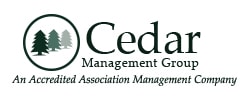Understanding the procedural intricacies of Robert’s Rules of Order amending documents, particularly the bylaws, is essential for maintaining the order and functionality of organizations. Every member of an organization should familiarize themselves with the requirements and processes for amendments.
How Does Robert’s Rules of Order Amending Documents Work?
Members can present individual amendments following the outlined procedure to propose changes to the bylaws. Typically, this involves providing prior notice to the membership about the upcoming vote on the amendment. The notice must be submitted to the board or a bylaws committee.
If not required, another member should sign the notice to indicate support. Alternatively, oral notice can be given at the previous meeting, making the amendment a part of the business at the next meeting.
Formal notice should include the following:
- Original bylaws;
- The proposed amendment; and,
- The potential revised bylaw if the amendment is accepted.
Organizations often provide a reason for the proposed change in the notice. This notice serves as the scope of the proposed change, preventing amendments beyond what was notified and safeguarding the rights of absent members.
When a bylaw amendment is on the agenda under general orders, a member must formally propose it. It must come with a second and the opportunity for debate. Members can make amendments within the scope of the notice, and a majority vote is required for adoption.
How to Revise Bylaws According to Robert’s Rules
When an organization decides to revise its bylaws, it should form a diverse and engaged committee comprising individuals with various perspectives and a knack for asking questions and proposing changes. This committee aims to resolve disagreements internally, avoiding conflicts during the presentation to the entire membership.
The organization should encourage all members to submit suggestions to the committee. This ensures a thorough consideration of all proposals without political influences. Once the committee completes the proposed revision, it must follow the amending procedure outlined in the bylaws. The organization should send its members a copy of the revision, along with a letter explaining significant changes.
Members should understand that a revision completely replaces the current bylaws. If the revision is rejected, no changes occur. If members appreciate certain aspects of the revision but reject it, they can propose the liked sections as amendments to the existing bylaws.
A crucial point is that a revision is akin to introducing new bylaws. It subjects every part of the proposed revision to potential changes by the membership. Typically, the revision is considered article by article, allowing for discussion and amendments. This method ensures that interconnected articles can be adjusted before voting on the revised document.
Presenting a bylaw revision in a special meeting or a series of special meetings allows members to consider the document carefully. During the meeting, the committee chairman gives a report and moves the adoption of the bylaw revision. Each article is then read and explained, followed by member discussions, questions, and potential amendments.
After reviewing all articles, the revised version is opened for additional discussion, debate, and amendments. The final vote on the amended revision requires a two-thirds majority. The adopted revision immediately replaces the existing bylaws. If defeated, the current bylaws remain unchanged.
Motions for Robert’s Rules Amending Bylaws
Two motions are associated with Robert’s Rules bylaw amendments: seriatim (consideration paragraph by paragraph) and proviso. Let’s take a closer look at each one below.
1. Seriatim (Consideration Paragraph by Paragraph)
- Purpose: To facilitate the discussion and amendment of lengthy documents by addressing one paragraph at a time instead of as a whole document.
- Requires a second.
- Not open to debate.
- Subject to amendments.
- Adoption necessitates a majority vote.
- No reconsideration.
- Outcome: If passed, the assembly reviews the document paragraph by paragraph. The chair starts with the first one and works in chronological order until it concludes the document.
An organization typically considers revising its bylaws per paragraph. If the chair doesn’t follow this setup, a member may make a motion seriatim. If adopted, the organization must revise its bylaws paragraph by paragraph. Members then take a vote following the end of the discussion and amendments.
The reverse is also applicable. If the presiding officer considers revisions paragraph by paragraph, a member may make a motion to consider the document as a whole instead.
Suppose a member motions to postpone indefinitely while considering the document seriatim. In that case, the chair states the motion but refrains from taking a vote or debate until the discussions seriatim finish. This is because members can still make higher-ranking motions.
If a member motions to refer to a committee, lay on the table, or postpone, the presiding officer takes these motions up immediately. Once adopted, they take effect. When the assembly returns to the document, discussions continue in seriatim from where they last concluded.
2. Proviso
- Purpose: To delay the effectivity date of a bylaw amendment.
- Requires a second.
- Open to debate.
- Subject to amendments.
- Adoption necessitates a majority vote.
- Reconsideration allowed.
- Outcome: If adopted, a bylaw amendment takes effect at a later time according to the proviso.
Provisos fall under the category of incidental motions. They give members a chance to set a later effective date for bylaw amendments.
There are three ways to deal with a proviso:
- While a bylaw amendment is pending, a member may make a motion to change it. To do this, they must add a clause such as “with a proviso that this amendment shall not take effect until…”
- While a bylaw amendment is pending, a member may make an incidental motion that it becomes effective at a specific time.
- If the move from the current bylaws to the revised one is complex, or if there are many provisos, they may be listed on a separate document. This document must be attached to the revision.
While a proviso postpones the effective date of an amendment, the amendment is still immediately included in the bylaws document. If the effective date or time is well into the future, add a footnote or notation indicating it as such.
Robert’s Rules of Order Amendment of Documents Explained
Clearly, there exists a comprehensive framework for Robert’s Rules of Order amending documents. This framework ensures a systematic and fair approach to revisions and changes, specifically when it comes to the bylaws. By following these guidelines, organizations can navigate the amendment process with precision, transparency, and inclusivity.
RELATED ARTICLES:
- How Can An HOA Legally Amend Bylaws And Covenants
- What Are The HOA Governing Documents You Need As A Homeowner?
- How The Corporate Transparency Act Applies To HOAs






